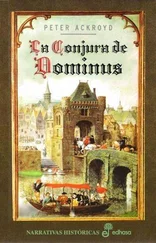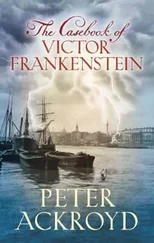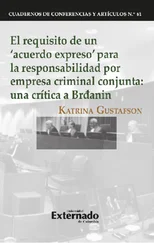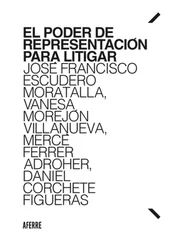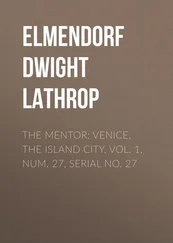Not all of them, however, found their way into the public haven. Effie Ruskin noted that in the evening “we see them all lying packed together at the edges of bridges, wrapped in their immense brown cloaks and large hoods.” One Venetian patrician, Gasparo Contarini, was not sure if they were citizens of the Venetian republic or stray animals. Some families lived on rickety boats beside the quays. In the nineteenth century the palaces along the canal were converted into tenements, where the poor huddled. No pictorial view of Venice in that century was complete without the appearance of a picturesque vagrant, preferably young and female and pretty.
In the middle of the sixteenth century there were estimated to be six thousand beggars in the city. By the end of the eighteenth century that number had risen to twenty-two thousand. This was perhaps partly a reflection of the reputation of Venice as a centre for travellers; it has always been the case that beggars are more likely to find succour from foreigners. Mrs. Thrale described them as “saucy and airy and odd in their manners.” She also noticed that they were treated by the Venetian people themselves with great softness and courtesy. An account of the Venetian beggars of the sixteenth century records their words. “I made the people think I was a madman.” “I dressed up as a pilgrim and with an image of Saint James in my hand, I covered my face. I made piteous signs and gestures and the rich gave me money.” They showed their wounds, their cancers and their ulcers in the public squares. There were familiar calls for succour. “Pity! Pity!” “I will pray for your life if you throw me a coin.” “Give money for the blessed Virgin.” The beggars came to Venice from many other cities. A list, dating from the summer of 1539, registers them from Milan, Sicily, Pisa and even France. In the twenty-first century, for example, old women and young men are to be found lying bowed on the bridges with their hands outstretched. Venice has been known as the haven for the outcast and the exile in every sense. Why should it not extend that courtesy to the genuinely dispossessed?
There is no dawn chorus of small birds in Venice. Yet as day breaks, the life of the city wakes from its silent slumber. Once more the traveller hears the rising voices, the whistles, the songs, the shouts, the pealing of bells. It is the morning of a human city. There is endless chatter in the air.
Friedrich Nietzsche wrote, in Ecce Homo , that “when I seek another word for music, I always find only the word Venice.” One evening in the city, in the late nineteenth century, Richard Wagner was being carried home on a gondola across the dark waters; his gondolier plied the oar when suddenly “from his mighty breast came a mournful sound not unlike the howl of an animal, swelling up from a deep, low note, and after a long-sustained ‘Oh!’ it culminated in the simple musical phrase, ‘Venezia’ …” So Venice is the music, while the music lasts.
In a guidebook to Venice, published in 1581, the city is celebrated as the seat of music, la sede di musica . It was the harmonious community, with an unrivalled tradition of sacred and secular music. The ducal orchestra played every day for an hour in Saint Mark’s Square; throughout the centuries, that central space has always been filled with music. There were other street bands, as well as concert halls and choirs. All of the sestieri echoed with the sound of voices and of instruments. On Good Friday the members of each parish—the wine-sellers, the fishermen, the gondoliers—would sing out the long chant of the Twenty-Four Hours. This was nothing to do with church observance. It was the choice of the people themselves. Each guild had its own songs and melodies. There were popular choral societies. There were many accademie , or private societies, where amateur musicians performed. The inventories of middle-class Venetian households reveal the presence of string or keyboard instruments in most of them.
All the public festivities of the city were conducted to the sound of music. There were concert barges, moored in the Grand Canal and elsewhere, performing for the Venetian public and for visitors. An engraving of 1609 shows a host of musical entertainments upon the canal. Concerts were also given by virtuosi in private houses. Musicians were even employed in the gambling houses of the city. And there were always comic ballets at the time of the Carnival. One English traveller noted, in 1770, that “the people are so musical here, that all day long the houses send forth the most melodious sounds, which die off charmingly along the water.” The presence of water invites song and music; there is something about its flow, and the sound of its flow, that elicits other melodies. So we read of “the solemn flow” of Venetian church music.
In the late eighteenth century Charles Burney remarked that the Venetian people seemed to converse in song. The gondoliers were notorious, if that is the word, for singing recitatives taken from the sixteenth-century poetry of Torquato Tasso. Yet these were laments, because the sadness of Venice entered its songs. Goethe has described how the women of the other islands of the lagoon, sitting on the seashore, would sing Tasso to their husbands fishing in the waters; the men would then reply in song, setting up a domestic conversation in music. Tasso was one of Venice’s favourite sons, having lived in the city during his early youth; his father was a member of the Aldine circle.
There were also popular songs, known as vilote , sung by the women as they sat sewing or preparing food. These were often laments of love, concerning hopes and dreams and desires. The vilote were also danced out in the campi to the music of harpsichords. And of course there were the famous Venetian serenades, sung beneath the ubiquitous balconies to the accompaniment of the mandolin or the guitar. It could be said that the Venetians were infatuated with music. They loved love and they loved melody. It is reported that when the Byzantine exarch, Longinus, visited the city of the lagoons in 567 he was almost deafened by the sound of bells and musical instruments waiting to greet him.
So there are records of Venetian music from the earliest periods of its history. In 815 “Priest Giorgio of Venice” became so expert in the art of organ-building that he was said to be guided by “mirifica arte.” Subsequently the organ-builders of Venice became famous throughout Europe. There are records of a singers’ guild in the basilica of Saint Mark’s from the beginning of the fourteenth century. A singing school for males was established there in 1403. Yet essentially the beginning of the sixteenth century initiated the long period when Venetian music took the palm. After the great expansion of its empire had ended, it aspired to other forms of supremacy. Venice was the home of the madrigal, invented in the city. It was the centre of church music. It was the capital of opera. There was scarcely a European composer of note who did not make his way to Venice—Scarlatti, Gluck, Mozart, Wagner, Handel, Mendelssohn, Monteverdi, Stravinsky, all visited the most serene city. Wagner and Monteverdi died there.
The masses in the churches, sustained by music and choir, lasted for many hours. Some passages of that sacred rite, particularly at the gradual and at the elevation of the host, were sustained by instrumental music so that people attended church as if they were visiting the concert hall. Instrumental music was also employed to suggest wordless prayer. What might be private, and intimate, becomes in Venice public and theatrical. The words of the songs for the heroes and heroines of the opera were altered to celebrate the male and female saints of the day; arias could be transformed into oratorios. Churches were in fact designed to be zones of sound. The church of the Incurabili, for example, was constructed as an oval space.
Читать дальше




